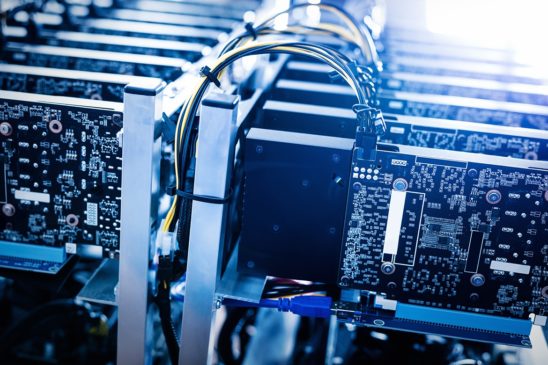As miner profitability has tanked considerably after the latest Bitcoin halving, the BTC mining difficulty has also seen a drop of over 6% if we compare it with the pre-halving period.
Last week, the Bitcoin blockchain network went through its most-awaited event of 2020 aka Bitcoin halving. This was the third halving event since Bitcoin’s inception in 2009. Bitcoin halving is the event that occurs every 210,000 blocks, which increases the Bitcoin network algorithms’ complexity and reduced mining rewards by half.
With the latest halving, Bitcoin mining rewards reduced from 12.5 BTC to now at 6.25 BTC for every block mined. With the average mining costs going high and the rewards going low, the miners’ profitability was on a toss. After the halving, over 20 exahashes per second (EH/s) of computing power got switched off from the BTC network.
Considering the 7-day rolling average, BTC’s hash rate crashed 20% from its before halving status. Before the halving on May 11, BTC’s hast rate was 122 EH/s and now it is currently at 92.7 EH/s. Almost all of the top-ten Bitcoin mining pools have seen hash rate crashing 30% on average.
On the other hand, Bitcoin’s mining difficulty has dropped 6% to 15.4 trillion on Wednesday. The mining difficulty shows how hard it is to compete for block rewards. Also, this drop in the mining difficulty is during the Bitcoin network’s first difficulty adjustment since the halving.
The Bitcoin network adjusts its mining difficulty every 2016 blocks or every 14 days. The mining difficulty adjustment ensures that the average interval between two blocks remains at 10 minutes.
Bitcoin Mining: Rushing for Maximum Moolah
Some market analysts agreed that before the halving, miners rushed to mine the most blocks making the most of profitability. Kevin Zhang, director of blockchain strategies at Greenidge Generation, said:
“We believe that, as the halving drew closer, miners in China did a sprint run of mining, even with older generation machines, to make most of the last days of the higher block rewards”.
Poolin vice president Alejandro De La Torre also agreed that a lot of miners were rushing to mine before the halving period. “That’s why we saw those sky-high hash rate figures,” he said. The top two mining pools F2Pool and Poolin tracked some miner profitability data at BTC’s current price and difficulty. As per them, the old generation miners won’t be profitable at electricity rates above $0.05 per kilowatt-hour.
In its report released in May, Poolin said that it still sees some hope for miners in the future. “While we expect most of these miners will shut down after the halving, it is likely that some of them have cheap enough electricity to survive in the near future,” they said.
Grayscale Buys 33% Bitcoin Mined in Last Three Months
According to research posted on Reddit, Grayscale Investments bought 33% of all the Bitcoins mined during the last three months. The company’s Bitcoin Trust Fund added nearly 60762 BTC in the 100-day period between February 7 and May 17. This is like purchasing over 600 BTC every single day for three months. The Redditor commented:
“For good measure, 60k bitcoins in the last 100 days is about 33-34% of all newly minted bitcoins in that period, give or take. And Grayscale is just one of the many ETF’s that people who don’t want to fiddle with private keys etc, can use to acquire bitcoin, albeit the largest one”.
Grayscale is popular for offering institutional-grade crypto investment products. As on date, it handles a total of $3.7 billion worth of digital assets under management.
To find out more Bitcoin updates, please, follow the link.
Bhushan is a FinTech enthusiast and holds a good flair in understanding financial markets. His interest in economics and finance draw his attention towards the new emerging Blockchain Technology and Cryptocurrency markets. He is continuously in a learning process and keeps himself motivated by sharing his acquired knowledge. In free time he reads thriller fictions novels and sometimes explore his culinary skills.




